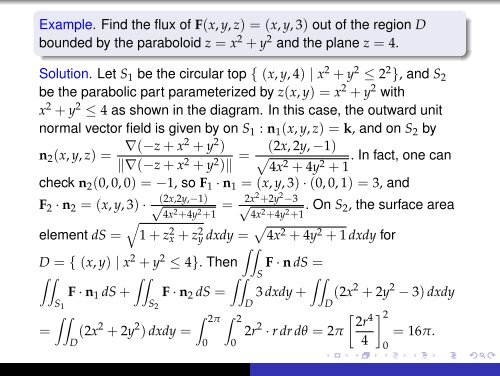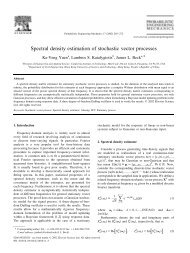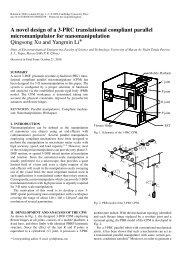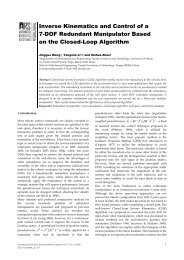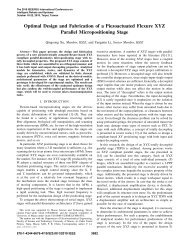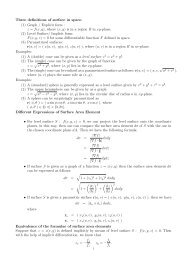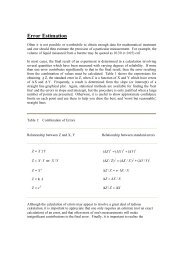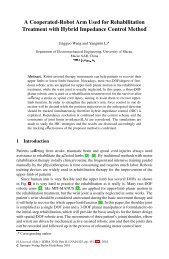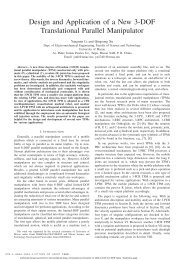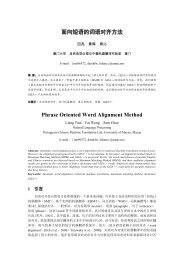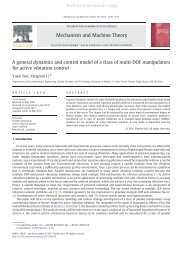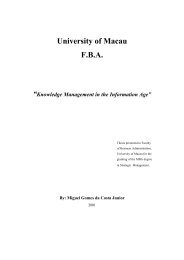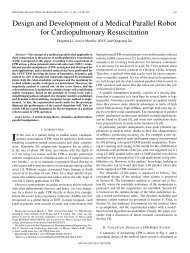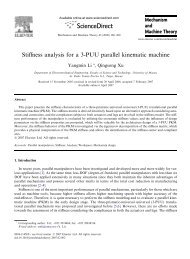lecture notes 13
lecture notes 13
lecture notes 13
You also want an ePaper? Increase the reach of your titles
YUMPU automatically turns print PDFs into web optimized ePapers that Google loves.
.Example. Find the flux of F(x, y, z) = (x, y, 3) out of the region D. bounded by the paraboloid z = x 2 + y 2 and the plane z = 4.Solution. Let S 1 be the circular top { (x, y, 4) | x 2 + y 2 ≤ 2 2 }, and S 2be the parabolic part parameterized by z(x, y) = x 2 + y 2 withx 2 + y 2 ≤ 4 as shown in the diagram. In this case, the outward unitnormal vector field is given by on S 1 : n 1 (x, y, z) = k, and on S 2 byn 2 (x, y, z) = ∇(−z + x2 + y 2 ) (2x, 2y, −1)∥∇(−z + x 2 + y 2 = √ . In fact, one can)∥ 4x 2 + 4y 2 + 1check n 2 (0, 0, 0) = −1, so F 1 · n 1 = (x, y, 3) · (0, 0, 1) = 3, and(2x,2y,−1)F 2 · n 2 = (x, y, 3) · √ = 2x2 +2y 2 −3√ . On S4x 2 +4y 2 +1 4x2, the surface area2 +4y 2 +1√element dS = 1 + z 2 x + z 2 y dxdy = √ 4x 2 + 4y 2 + 1 dxdy for∫∫D = { (x, y) | x 2 + y 2 ≤ 4}. Then F · n dS =∫∫∫∫∫∫ S ∫∫F · n 1 dS + F · n 2 dS = 3 dxdy + (2x 2 + 2y 2 − 3) dxdyS 1 S 2 DD∫∫∫ 2π ∫ 2[ 2r= (2x 2 + 2y 2 ) dxdy = 2r 2 4· r dr dθ = 2π = 16π.4D00] 20. . . . . .


